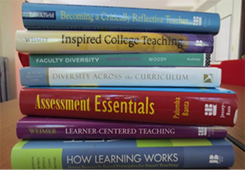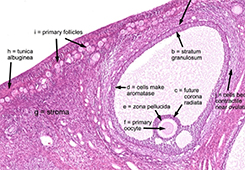Strategies for Improving Reading Questions


Interview with Leandra Elion, Lecturer, Children with Special Needs in the Eliot-Pearson Department of Child Study and Human Development.
Students often ask for guides to help them make sense of the reading their professors assign. Leandra Elion, a lecturer in the Eliot-Pearson Department of Child Study and Human Development, has some suggestions.
Before coming to Tufts, Elion worked as a reading specialist in the public schools. She taught her students a variety of reading strategies, including the Question-Answer Relationship (QAR),which was developed to help children understand reading questions and determine where in the texts to find the answers. When she came to Tufts, Elion realized that she could adapt the strategy to designing reading questions for her students.
“At Tufts I use QAR as a guide to help me formulate questions. Rightly or wrongly I make the assumption that the students at Tufts do know how to read. I don’t really have to explain the strategy to them. But when I develop the questions, I ask myself if I’ve given them four different kinds of QAR questions:
A literal question whose answers can be found in the text;
A question that requires students to synthesize information from various parts of the text;
One that requires them to relate their experiences with the text; and
One that insures they are making connections beyond the text.
I don’t want to make all the questions superficial – scan the chapter, look at headings then I’m done – I make a mix of these four different kinds.
“Although I don’t tell the Tufts students specifically the kind of question I’ve asked, when I read their responses and they haven’t answered it correctly, I tell them, in retrospect, what they should have done. ‘You should have looked at text and compared and contrasted with the previous chapter.’ And I might say ‘Now I want you to go back and re-do this, but slow down. You have to use higher level thinking. You have to make inferences.’
Elion has some suggestions for faculty developing reading questions for students.
“I find it difficult when instructors at any level say ‘read Chapter 7’ but they don’t give students a purpose. The purpose might be making connections or evaluating what you read. You could be asking students to read a research study, and then they’ll have to, right there, identify subject, research, methodology. But students can take it much deeper, connect it to other research studies they might have read, or design it differently.
“Instructors should develop the questions carefully toward that end. Coming up with good questions can be overwhelming, but if you just think of putting questions into good categories you’ll get good questions. You don’t have to use all four types of questions with every assignment as long as, over the course of unit, you give a variety of types of questions. I like this strategy because it’s guiding but not prescriptive.
Elion notes that there is research behind these strategies, mostly the work of Kathy Rafael in elementary and upper elementary, to show that students scored better on comprehension questions and reading assessments when they were taught these strategies.
References:
- Fisher, D., and Frey, N, (2004). Improving Adolescent Literacy: Strategies at Work.New Jersey: Pearson Prentice Hall.
- Raphael, T.E., & Au, K.H. (2005). QAR: Enhancing comprehension and test taking across grades and content areas. The Reading Teacher, 59, 206-221.




